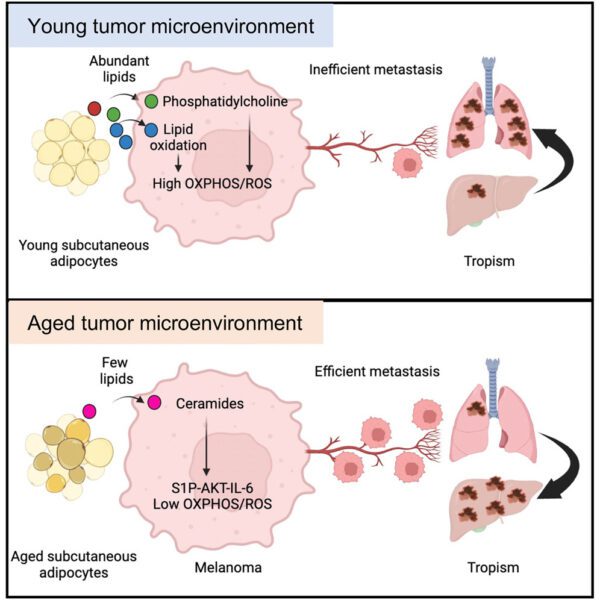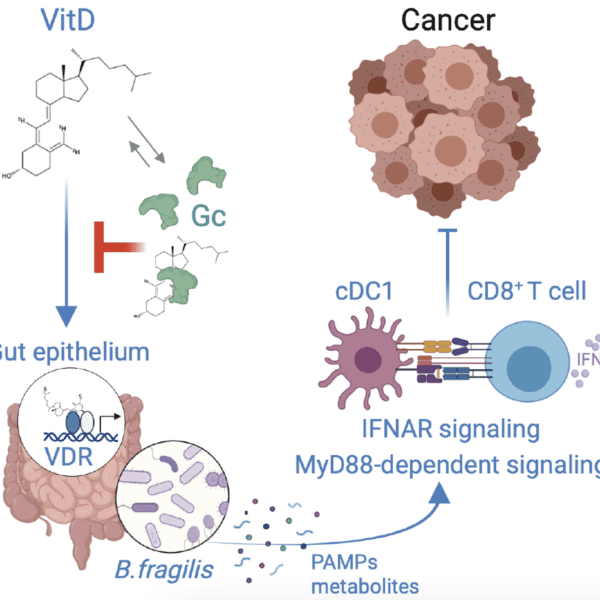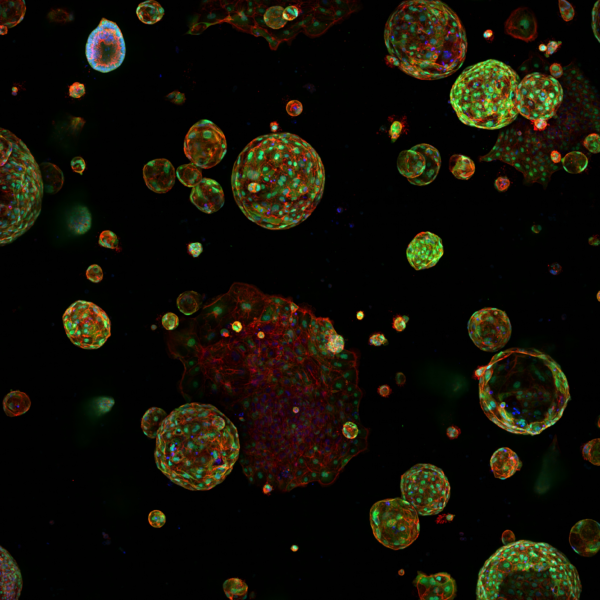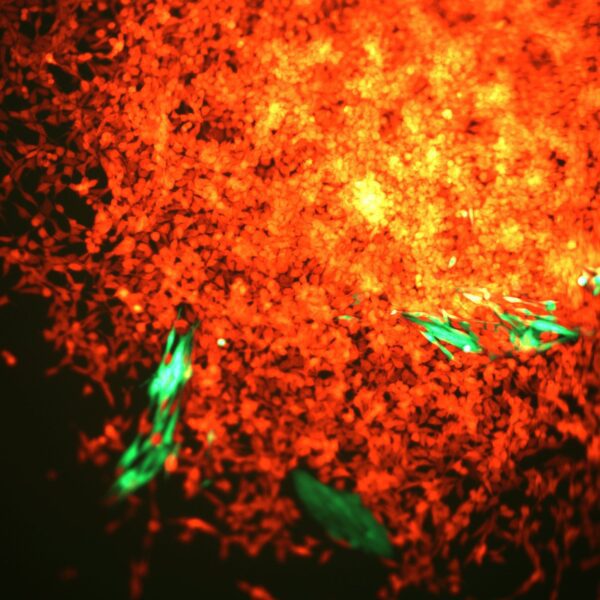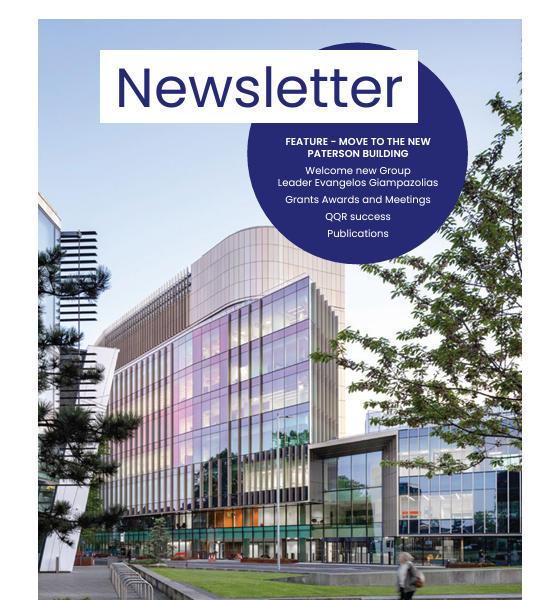As part of our AWERB‘s Culture of Care Pledge, we want to share our research and practices with the wider scientific community as well as clearly communicate the benefits and developments in animal research with the public. This formed the basis for a series of research engagement events this year with a new package of activities around the theme “How we study cancer – Exploring current and emerging models of the disease”.
Working with our Research Engagement Team of research, core facility and operations staff and students, we developed a number of hands-on activities to highlight the important role that mice play in our research, as well as the steps we are taking to reduce and replace the use of mice wherever possible, in line with our commitments under the 3Rs (Replacement, Reduction and Refinement of use of animals in research).
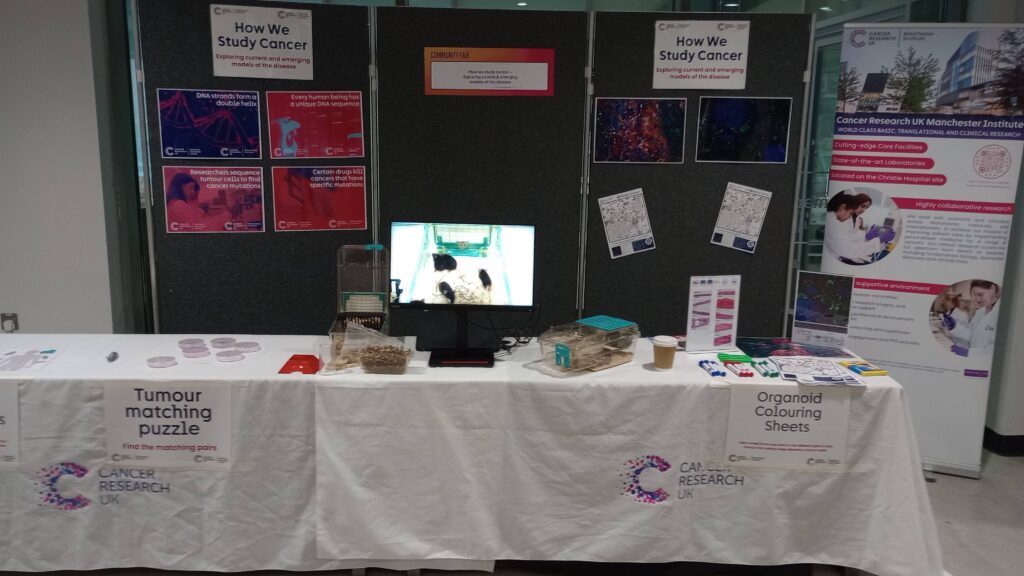
Getting to interact with people genuinely interested in how we use these models for different biological questions and projects, and how they can eventually lead to more translational applications, was a very enriching experience.
Lucia Montero Martinez
Scientific Officer, Cancer Research UK National Biomarker Centre
We have taken this exhibit to Manchester Museum during British Science Week 2025, where as part of the Science Fair organised by the University of Manchester we welcomed over 700 secondary school children over two days in March, as well as members of the public during one of the days when the museum was open to visitors as usual.
These activities were refined and developed further, and subsequently taken to the Universally Manchester Festival in June, which welcomed around 2000 visitors to the main campus on Saturday 14th June.
We are grateful to all the amazing volunteers who gave their time to come and run the stalls at these events, as well as taking part in creating the activities and organising everything behind-the-scenes. They all had great conversations with visitors to the exhibit, including discussions around experimental design, ethics, technical aspects of research, and shared their career journeys – all of which was inspiring for the next generation of scientists who we met across the week.
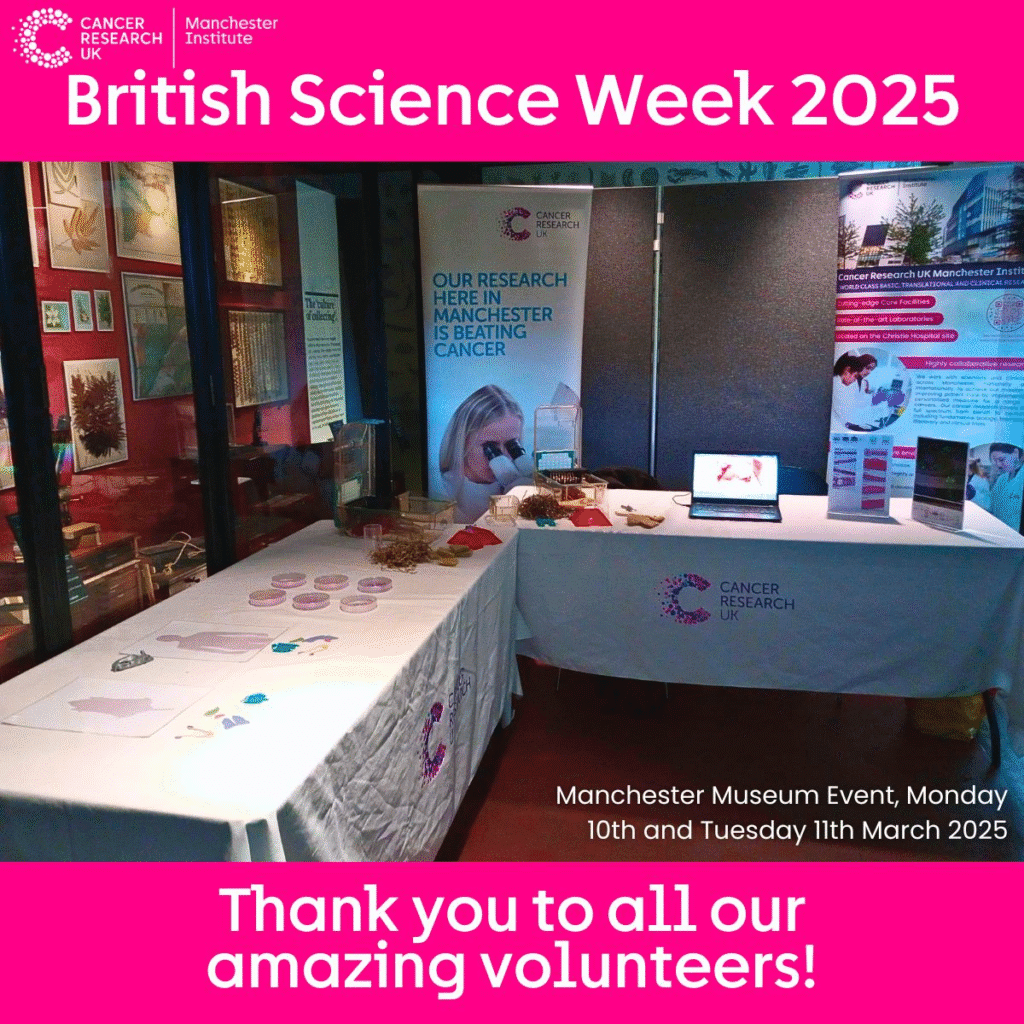
Our activities covered three main areas: why we use mice in research, how we care for the mice in our research, and how we are replacing or reducing the use of mice.
- To demonstrate why mice are a good model for studying certain aspects of cancer biology, we created an activity where participants have to pair up histology images of tumours – finding two different lung tumour images, for instance – and then guess which one came from a patient and which came from a CDX (circulating tumour cell derived xenograft, grown in a mouse). This proved challenging as they look very similar, which helped make the point that tumours grown in mice have very similar characteristics to those from patients
- We brought cages from our animal unit, and participants were very interested to see how they differed from domestic animal cages, with their transparent plastic allowing good visibility of mice while providing a sterile environment. Visitors to the stalls enjoyed handling different enrichment elements and were able to watch short videos of mice taken in the animal unit
- To demonstrate advances in replacing or reducing mice in research, we brought some striking organoid images donated by the Systems Oncology group showing mixes of tumour cells alongside fibroblasts and immune cells. We also used images from a recent paper showing the development of a model of lung squamous cell carcinoma which was developed using samples from human patients, and which can be used for drug screening in the lab, work funded by the National Centre for the Replacement Refinement & Reduction of Animals in Research (NC3Rs)
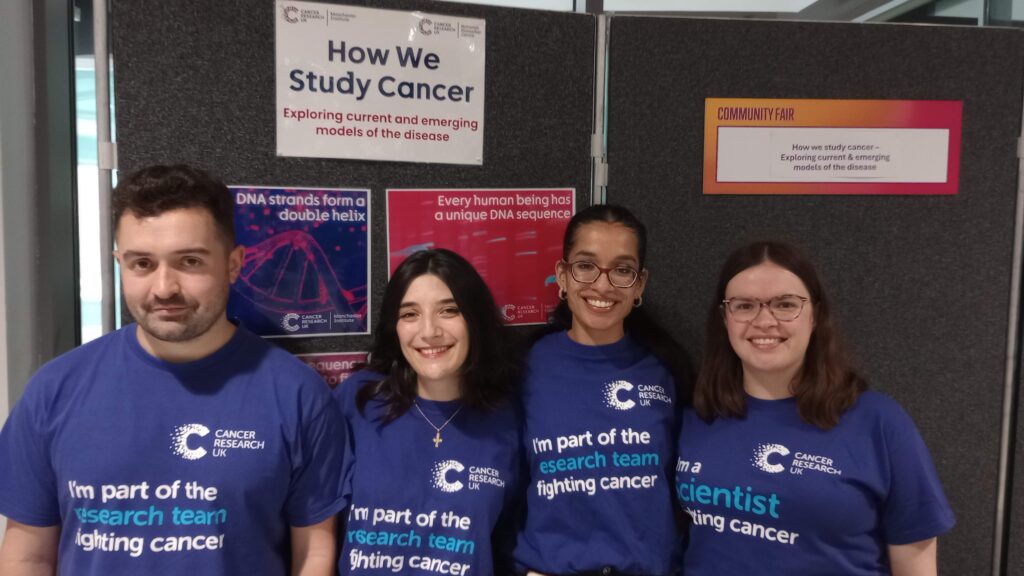
Seeing how the mice are looked after in a structured, thoughtful way with their care and welfare being uppermost in the building of the whole unit, was highly informative
Deepti Wilks
Retired senior scientific officer, Manchester Cancer Research Centre Biobank
